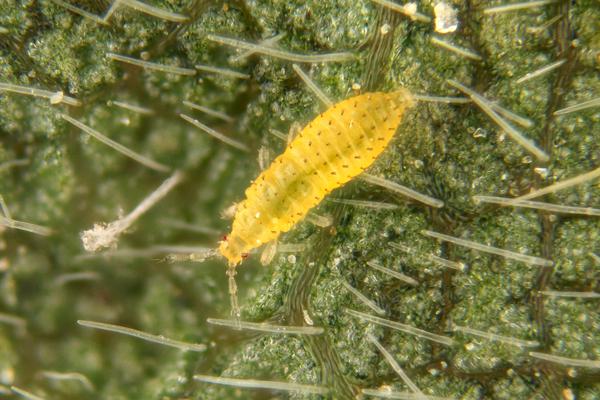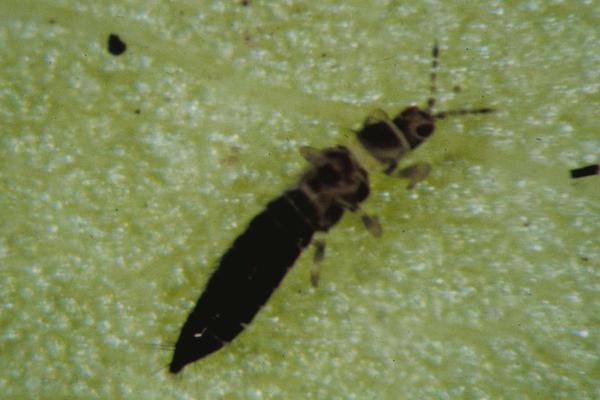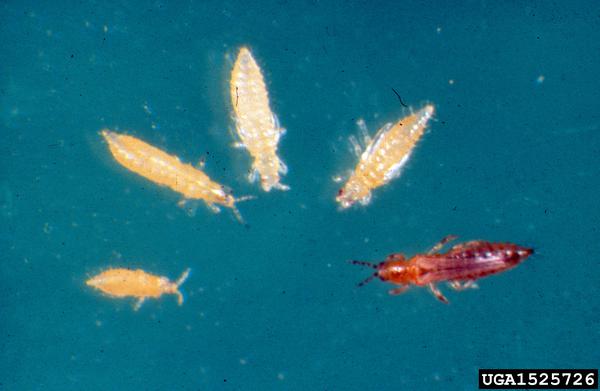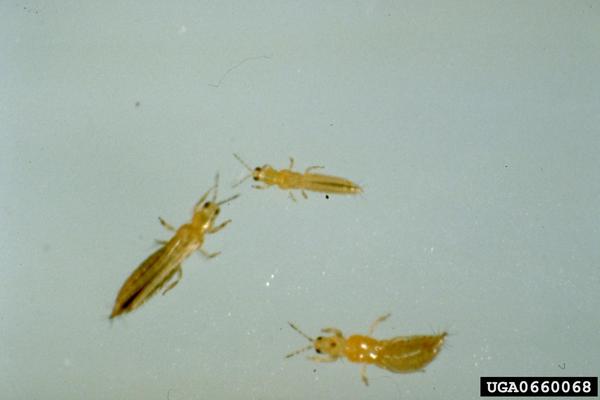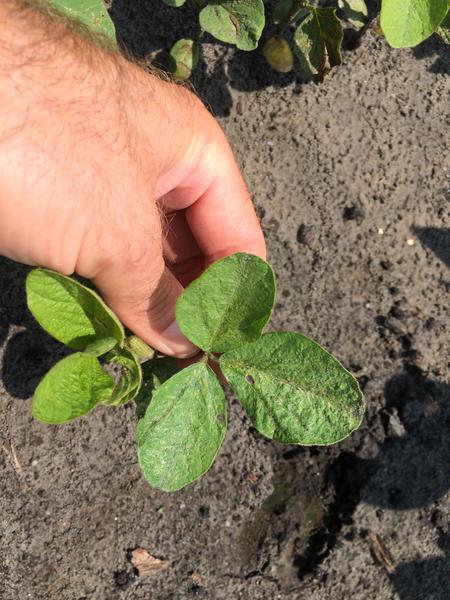Thrips, Thysanoptera (order)
Tobacco thrips (Frankliniella fusca (Hinds)), Soybean thrips (Neohydatothrips variabilis (Beach)), Western flower thrips (Frankliniella occidentalis (Pergande)) and Eastern flower thrips (Frankliniella tritici (Fitch))
Biology and Identification
Many different species of thrips occur on soybeans. Generally, the most common thrips species is tobacco thrips (Frankliniella fusca (Hinds)), followed by soybean thrips (Neohydatothrips variabilis (Beach)). Other common species include western flower thrips (Frankliniella occidentalis (Pergande)) and eastern flower thrips (Frankliniella tritici (Fitch)). In general, western flower thrips are more common earlier in the season, while soybean thrips are more common later in the season. Thrips are difficult to identify to species without the aid of powerful magnification and slide mounting. These insects are very small (less than 1/10 inch) and are torpedo shaped.
Very little is known about the pattern of thrips colonization and population development in soybeans. Adults will colonize the plant after emergence and lay eggs. These eggs then hatch into larvae that feed on the leaves. Adult densities peak at 3 to 5 weeks after planting, with larval densities peaking at 4 to 5 weeks after planting.
Feeding Injury and Damage
Thrips can pucker soybean leaves and silver them when densities are high. This injury is apparent because they pierce the cell walls and remove the contents. Silvering is a result of the airspace left from dead cells. They will not cause a yield loss and no treatment is needed.
Thrips feed and reproduce on the leaves and buds of soybean seedlings. Their feeding creates bleached-out lesions along the leaf veins and gives a silvery/bronzed appearance to the leaf surface when damage is severe. While thrips almost always can be found on soybean seedlings, certain outbreak years often cause growers concern. In particular, during dry weather and on earlier planted full-season soybeans, thrips populations can soar when plants are growing slowly. However, plants generally grow out of this injury without impact to yield. Other stressors, such as herbicide injury, can add to thrips damage and cause plant loss.
Read more on the Soybeans Web Portal.
Economic Threshold
Thrips are not an economic pest of soybeans in North Carolina.
Insecticide Management
Multiple research trials have indicated that, although plants may look very poor, thrips do not need a foliar insecticide treatment. Furthermore, across extensive multi-year extension research trials, yields have never been show to benefit from any insecticidal seed treatment. Although many of these products reduce thrips abundance and may produce a healthier looking seedling, soybean plants can compensate for this early injury. Furthermore, insecticide seed treatment use in soybeans has driven resistance to seed treatments for tobacco thrips in cotton. Finally, research has found that severe thrips injury may increase damage from post emergence herbicides that cause leaf burn. This may be a concern in fields planted to conventional soybeans, due to herbicide weed resistance. Written By
Read more on the Soybeans Web Portal.
Publication date: April 8, 2020
N.C. Cooperative Extension prohibits discrimination and harassment regardless of age, color, disability, family and marital status, gender identity, national origin, political beliefs, race, religion, sex (including pregnancy), sexual orientation and veteran status.


